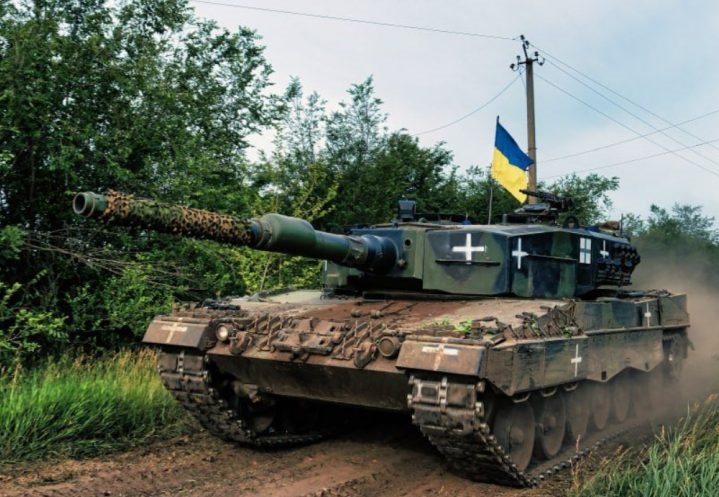35 countries helped Ukraine become the world’s largest importer of weapons
10 March 16:29
In the period from 2020 to 2024, Ukraine’s imports of major weapons increased almost 100 times compared to the previous four years. This is evidenced by new data on international arms transfers published today by the Stockholm Institute of Peace Research (SIPRI), "Komersant Ukrainian" reports.
Overall, European arms imports have increased by 155 percent over the past four years as European states have responded to Russia’s invasion of Ukraine and uncertainty about the future of U.S. foreign policy.
Who has supplied Ukraine with weapons and how much
According to SIPRI, at least 35 states have sent weapons to Ukraine since Russia’s full-scale invasion in 2022, and more are in the pipeline. Ukraine received 8.8% of global arms imports in 2020-2024.
Most of the weapons supplied to Ukraine came from the United States (45%), followed by Germany (12%) and Poland (11%). Ukraine was the only European country among the 10 largest importers in 2020-2024, although many other European countries significantly increased their arms imports during this period.
According to Matthew George, Program Director of the SIPRI Arms Transfers Program, “the new arms transfer data clearly reflects the rearmament that is taking place among European states in response to the threat from Russia.”
European countries are increasingly dependent on American weapons
Arms imports by European NATO members more than doubled between 2015-2019 and 2020-2024 (plus 105 percent). The United States supplied 64 percent of these weapons, which is significantly more than in 2015-2019 (52 percent). Other major suppliers in the European market were France and South Korea (6.5 percent each), Germany (4.7 percent), and Israel (3.9 percent).

At the same time, France became the world’s second largest arms supplier in 2020-2024, supplying 65 countries. French exports of major weapons to other European countries almost tripled between 2015-2019 and 2020-2024 (plus 187 percent).
“Given an increasingly belligerent Russia and transatlantic relations during the first Trump presidency, European NATO countries have taken steps to reduce their dependence on arms imports and strengthen the European arms industry,” said Peter Weseman, Senior Fellow at SIPRI’s Arms Transfers Program. “But the transatlantic arms supply relationship has deep roots. Imports from the United States have grown, and European NATO countries have nearly 500 combat aircraft and many other weapons still on order from the United States.”
US dominance in global arms exports is growing
US arms exports grew by 21 percent between 2015-2019 and 2020-2024, and its share of global arms exports increased from 35 percent to 43 percent.
For the first time in two decades, the largest share of U.S. arms exports in 2020-2024 went to Europe (35 percent) rather than the Middle East (33 percent). Nevertheless, the largest recipient of US arms was Saudi Arabia (12 percent of US arms exports).
Arms exports from Russia continue to fall
In contrast to the United States, Russian arms exports fell sharply (minus 64 percent) between 2015-2019 and 2020-2024. The decline began even before Russia’s full-scale invasion of Ukraine in February 2022: in 2020 and 2021, exports were significantly lower than in any year in the previous two decades.
Peter Weseman, Senior Fellow at SIPRI’s Arms Transfers Program, emphasizes that “the war against Ukraine has further accelerated the decline in Russian arms exports because more weapons are needed on the battlefield, trade sanctions are making it harder for Russia to produce and sell weapons, and the United States and its allies are pressuring states not to buy Russian weapons.”
In addition, according to the expert, Russia’s arms trade with “two of its most important buyers will weaken before 2022: India is increasingly favoring other suppliers, and China is getting more weapons from its developing arms industry.”
Ukraine is increasing its own weapons production
The capabilities of the Ukrainian defense industry have increased 35 times in three years and will reach $35 billion in 2025. This was recently announced by the head of the Ukrainian government, Denys Shmyhal.
He said that Ukraine currently produces about a third of the required weapons, with the goal of 50%.
Also, according to Denys Shmyhal, in three years the infrastructure for creating drones has been built from scratch, and now Ukraine produces the world’s largest number of military drones of all types. Last year, more than 1 million drones were manufactured, and this year it is planned to produce more than 2.5 million drones. More than 500 companies are working on this.
As the Prime Minister emphasized, the Danish model is also actively developing: in 2024, almost $1 billion was raised in this way.
What is the “Danish model” of financing arms production?
In 2024, Ukraine and Denmark introduced a new mechanism for financing the purchase of weapons for the Armed Forces of Ukraine through the reimbursement of contracts with Ukrainian manufacturers. According to this scheme, the Ukrainian side compiles a detailed list of projects requiring funding, and Danish experts conduct a detailed assessment of the capabilities of the recommended companies and analyze their previous experience in fulfilling contracts.

At the first stage, Denmark allocated a tranche of €50 million, which was used to produce 18 Bohdan self-propelled artillery systems. Subsequently, funding was expanded to include the production of long-range drones, anti-tank and anti-ship missile systems.
The successful implementation of the “Danish model” contributed to the expansion of funding for the Ukrainian defense industry by other countries. In 2024, Sweden and Iceland joined the mechanism.
An additional result was the decision to finance the production of Ukrainian weapons at the expense of interest from frozen Russian assets. In 2024, 390 million euros were allocated for this purpose.
An equally important form of cooperation is the creation of joint defense enterprises in Ukraine, of which there are already about 40. The partners include world leaders such as Germany’s Rheinmetall AG, the Franco-German KNDS, and the American Boeing Corporation.









